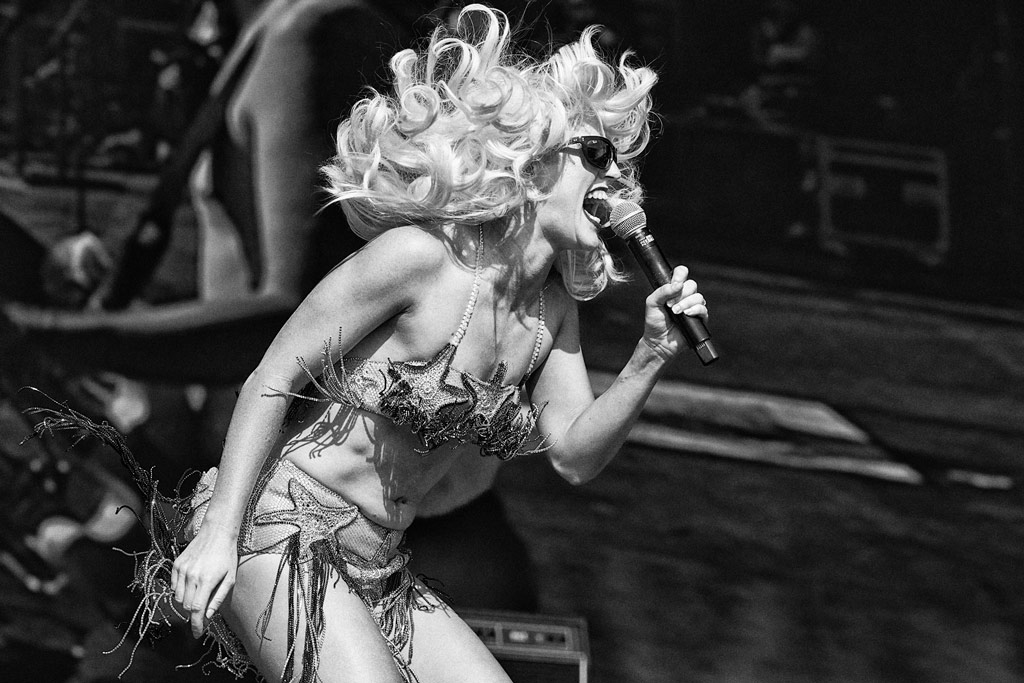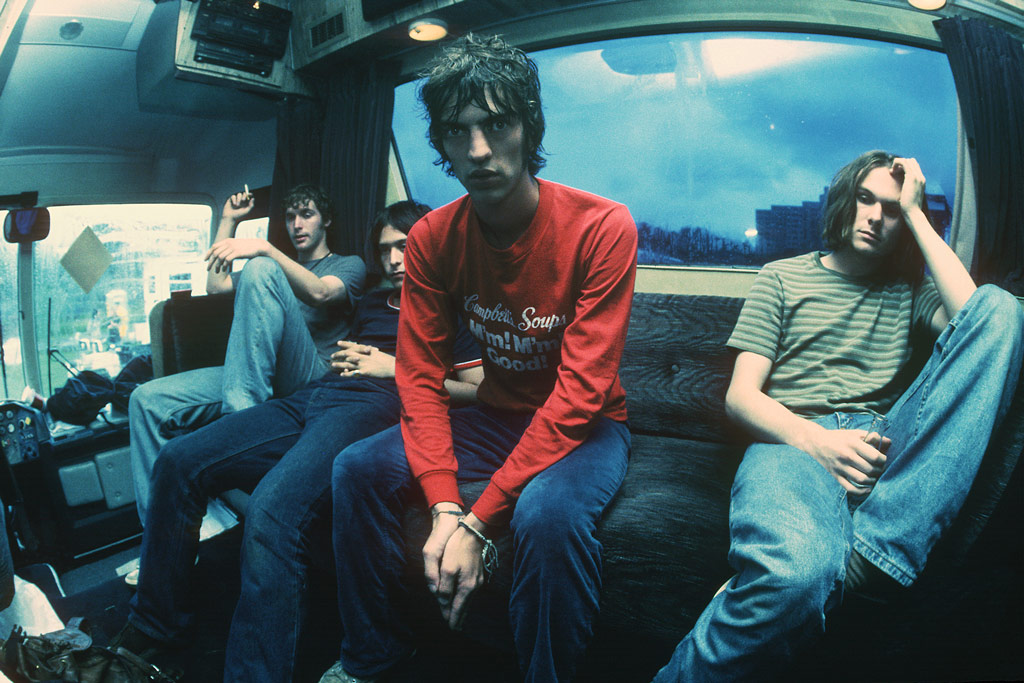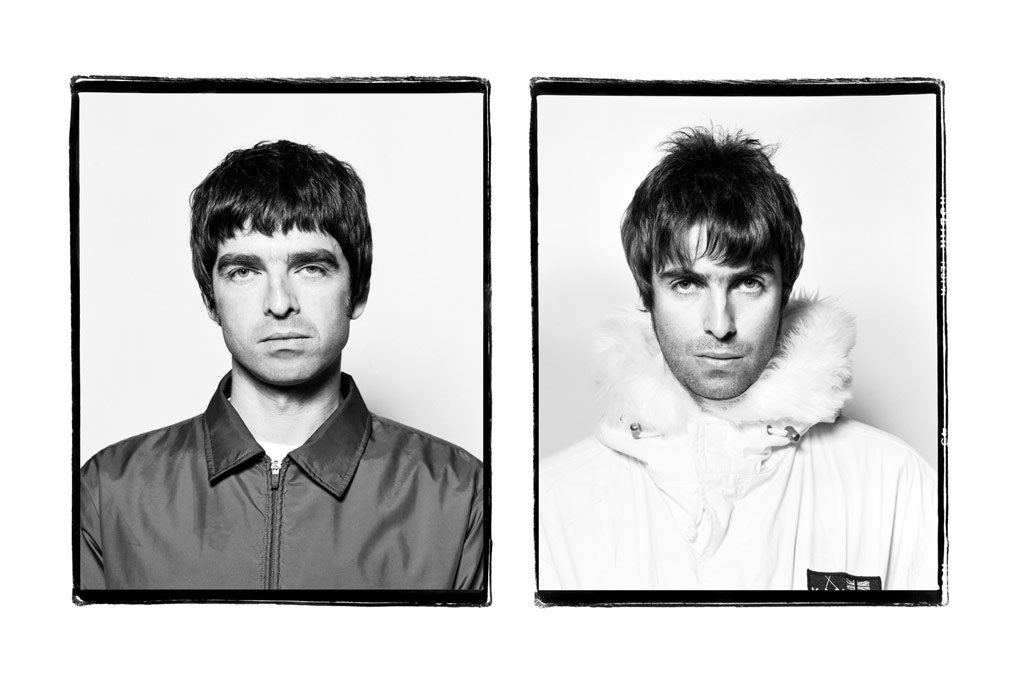Scarlet Page’s favourite pictures
Amyl and The Sniffers, Glastonbury 2025

‘I’ve been following Amyl and the Sniffers avidly for a few years after I was made aware of them from some time spent in Australia. Amy’s energy really struck me and I wanted to capture some of her fire. I finally had the opportunity to shoot them this year at Glastonbury… [singer] Amy is a photographer’s dream.’
Coldplay, Glastonbury 2024

‘I was fortunate enough to be one of a handful of photographers in the pit for Coldplay’s performance. The pressure was on, but so was the excitement. This shot perfectly captures the essence of a Coldplay show – the band on stage, confetti showering over the crowd with a sense of pure celebration in the air. It’s a moment that embodies the joy and energy that Coldplay brings to their performances, and being able to document it was an unforgettable experience.’
The Verve, A Northern Soul, 1994

‘My picture of The Verve was the first shot I ever took that made my portfolio stand out. I had lots of air miles from assisting, so I decided to go to this festival in America. I was introduced to The Verve, because they were from England, and was taken onto their tour bus. I just said, “is it alright if I take some pictures?” They sat in the front of the bus and I didn’t have a plan. I was cross processing my film – I had some C41 that I was processing through E6 – because it was all the trend at the time and I was bounce flashing with a fisheye. I didn’t know if the pictures were coming out but they came out really well, were really vibey, though the band looked pissed off. They were having some trouble in the band – it wasn’t all hunky dory.
When I came back I made a composite card with some fresh images on and sent it out to everyone I knew managers, PRs… Their manager called up straightaway and said, “We love this shot and we’d like to use it in their album artwork”. From just doing it off my own back, and making something happen, that shot became so huge in terms of a kickstart. It was inside their A Northern Soul album, so that’s pretty special for me. I was being resourceful and taking chances out of my comfort zone… and it worked. It didn’t always, but that time it did.’
The Gallagher Brothers, 2001

‘I shot them in the hallway of The Scala for an editorial that was to do with them touring with the Black Crowes brothers and Space Hog Brothers. It wasn’t a feature about Oasis, but I made sure I did plenty of shots for the brief. I took shots of the Gallagher brothers on their own and, as time has progressed, those images have become a lot weightier in how they’re viewed. I was pleased to shoot the two brothers in Oasis because they were huge at that time. The pictures look very classic now looking back – black and white, very contrasty and it looks like they were shot in a studio, not a hallway. You just see really clean, beautiful, almost Bailey-esque kind of portraits. There’s one composite that I made of the two together that I’m pretty fond of. Obviously, at the moment, it’s popping up everywhere. It just shows the resourcefulness of thinking outside the brief and making sure you cover yourself. At this point, 30-odd years into my career, having that archive that is all mine is great… some people don’t have that, but you want to keep your copyright.’
Scarlet Page’s top tips for music photography
1 – Form a connection for portraits
‘Portrait-wise, it’s all about forming a connection and allowing your subject to feel relaxed. Most people don’t really love being shot. In a studio they are quite vulnerable; just standing in a space and you’ve got someone looking at you through a lens… it’s quite intimidating. I want to try and connect immediately, just on a chatty level. I don’t direct that much. I try and get something that’s not just a photograph. Something that’s a little bit behind the mask or a more light-hearted moment where they drop their guard. Sometimes you just have to say something silly or get them to talk between themselves. It depends what the vibe is that you’re going for, but the viewer needs to feel a connection with the image. You want to be drawn in and interested, because otherwise you just scroll past.’
2 – Shoot variety
‘I try and get as much variety. If I have an hour with a new band then I will just try and do as many different looks as I can – colour, black and white, some lit, some natural light. Particularly if it’s a commission, then you want to try and make it look like it wasn’t all done in the same place on the same day.’
3 – Get new angles
‘The recent Glastonbury festival was pretty much standard – you get three songs and it’s a high stage. I will take a box to stand on because I like to be able to just have that option of getting a slightly more not “under the chin” angle.’
4 – Pay attention and tune in
‘With live photography, I’ll get the action shots, try to get the energy, but I also try and get the sort of moments where they pull back from the mic, are maybe laughing or just before they come back in and start singing again. It’s also anticipating what’s happening in the music. You’re not watching a gig… you’re kind of tuning in and being ready. I don’t run around the pit. You’ve got three songs, so I might move a little bit for every song. But sometimes it’s quite interesting to see how the action comes to you. I’ll always have at least two bodies with different lenses, so that if something is going to be better caught as a wide, then you’ve got that, but you can also zoom in. I’m not the kind of photographer who just [makes rapid shutter noise] takes multi shots. I tend to be a bit more considered, but I guess that’s because I’ve been doing it since the early ‘90s and in those days you couldn’t just reel off so many transparency frames. It’s just about paying attention and being locked in.’
5 – Entering competitions – ask for opinions
‘It’s very hard to be objective on your own work, but I think you have a rough idea of what your strongest images are. It’s always a useful exercise to ask other people what they think. Maybe get your 10 finest images and speak to other people and get an idea of what resonates with them, because that will probably be your strongest shot. Quite often I’ll see peoples’ portfolios and tell them to just keep one of that artist. Don’t have three shots from the same gig, because that’s boring me – you just want one. It makes for a better portfolio. I definitely don’t want to be led by the artist. I’ve judged music photography awards in the past and it’s not just about who it is in the picture or what kit you’ve got. It’s just what you’ve captured and created. It’s about having a feeling that’s gonna evoke something in me when I see shots. It’s a gut feeling – it will just sort of hit and I’ll like that one.’
This article was originally part of a feature published in Amateur Photographer Magazine written by Steve Fairclough



